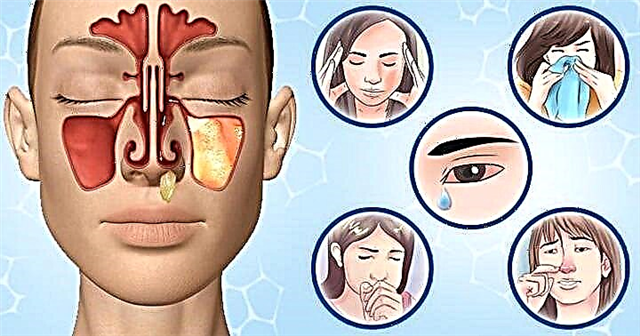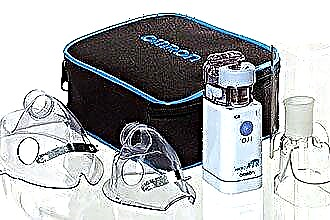An asymptomatic course of increased pressure inside the eyes is dangerous. The circulation of the liquid in them is disturbed, the outflow is impeded. Without treatment, vision is lost at the periphery, and then in the center. This condition is called glaucoma. To preserve the optic nerve, eye pressure drops are needed.
 The term intraocular pressure is understood as the force of impact that is exerted by the structures of the eye - aqueous humor and vitreous humor on its capsule. Due to it, the tone of the organ is maintained. Normal intraocular pressure is created by the difference in moisture from the anterior and posterior chambers, which constantly decreases and flows in.
The term intraocular pressure is understood as the force of impact that is exerted by the structures of the eye - aqueous humor and vitreous humor on its capsule. Due to it, the tone of the organ is maintained. Normal intraocular pressure is created by the difference in moisture from the anterior and posterior chambers, which constantly decreases and flows in.
Thanks to this feature, the maintenance of the correct operation of the eye system is ensured. Intraocular pressure ensures the spherical shape of the organ, as well as creates the necessary conditions for organizing the nutritional processes of all structures.
Drops for relieving eye pressure
There are many options for how to reduce high intraocular pressure. The most convenient is to use drops. They have a different mechanism of action and composition, but all are aimed at maintaining the normal functioning of the organ of vision. Depending on the main active substance, the funds are divided into the following groups:
- cholinomimetics;
- carbonic anhydrase inhibitors;
- sympathomimetics;
- analogs of prostaglandins;
- beta-blockers;
- alpha adrenergic agonists;
- combination drugs.
Depending on the cause that caused the increase in intraocular pressure and the characteristics of the patient, drugs of a certain mechanism of action are prescribed.
Some eye drops are aimed at reducing the formation of intraocular fluid, others stimulate its outflow, and the third group is a combination of drugs.
Cholinomimetics
The main agents of this group are "Carbacholine" and "Pilocarpine". Treatment of intraocular pressure occurs by improving the outflow of fluid. Facilitation of its removal is observed with constriction of the pupil and contraction of the muscles inside the eye. They work well with medicines from other groups.
The property of the drug "Pilocarpine" is to contract the muscles of the eye through the stimulation of receptors. Then the pupil narrows and the pressure inside the eye decreases. The indications for the use of drops are:
- Closed-angle and open-angle glaucoma.
- Retinal vein thrombosis.
- Obstruction of the arteries in the retina.
- Before examination for pupil constriction.
- After the end of the operation.
- To eliminate the symptoms of overdose with drugs that dilate the pupil.
 Eye drops are not safe for patients with iridocyclitis, keratitis, allergies to the components of the drug.
Eye drops are not safe for patients with iridocyclitis, keratitis, allergies to the components of the drug.
It is not recommended to use them after some operations, when the constriction of the pupil can lead to complications.
To lower the pressure, "Carbacholine" is used. It has the same properties as Pilocarpine. It is used only among patients with angle-closure glaucoma. The appointment of the drug is prohibited in case of violation of the integrity of the cornea, bronchial asthma, angina pectoris and hypersensitivity to active ingredients.
Carbonic anhydrase inhibitors
A group of drugs for the eyes from high blood pressure is aimed at a special enzyme that is produced by the ciliary body. A change in its functioning leads to a decrease in the amount of moisture formed in it. For this purpose, the most effective and affordable drops "Azopt" and "Trusopt" are used. They contain various active components, and therefore the indications for the appointment have some differences.
Drops "Azopt" reduce the transport of fluid and sodium, which leads to a decrease in the formation of intraocular fluid. For this reason, high blood pressure is normalized. It is indicated for people with open-angle glaucoma. "Azopt" is not prescribed for patients with kidney diseases, and limited use is allowed for liver diseases and closed glaucoma.
The drops "Trusopt" that reduce eye pressure act on the same principle. It is based on another active substance that allows you to expand the indications. It can be used by patients with open-angle (children and adults) and secondary glaucoma without block in the anterior chamber of the eye.
Sympathomimetics
The action of drugs is based on the effect on cell receptors. Many patients are prescribed drops to reduce eye pressure "Oftan Dipivefrin". They temporarily increase fluid production and then significantly reduce fluid production. At the same time, the pupil expands. "Oftan Dipivefrip" is indicated for people with angular glaucoma and cataract that has arisen on the operated eye. Drops from eye pressure are not prescribed in case of allergy to the components of the drug and in case of blockage of the angle of the anterior chamber of the eye.
Prostaglandin analogs
The drugs in this group for reducing intraocular pressure have proven to be safe and effective. The result becomes noticeable within 1-2 hours after instillation. Most often used "Lanoprost", "Unoproston", "Taflotan".
| A drug | Property | Indications | Contraindications |
|---|---|---|---|
| Lanoprost |
| It is used for open-angle glaucoma. |
|
| Unoprostone | The mechanism of the drug is based on facilitating the outflow of intraocular fluid. |
| It is not used in case of hypersensitivity to the main components of the product. |
| Taflotan |
|
|
|
After instillation of the drug, the effect is noted after 2 hours and lasts for 12 hours.
Beta-blockers
Ophthalmic drops with increased eye pressure have similar properties to drugs for systemic administration. The action is based on reducing the amount of moisture. When instilling the drug, it is recommended to close your eyes for 2-3 minutes. During this time, beta-blockers will begin to exert only a local effect, and practically will not penetrate into the nasolacrimal duct. If you do not adhere to the recommendation, then drops from increased eye pressure, entering the bloodstream, will negatively affect the cardiovascular, endocrine respiratory system.
To reduce the risk of side effects, more modern drugs are prescribed. These include "Timolol", "Betoptik". The first drug is well tolerated and patients practically do not notice an increase in heart rate as one of the possible phenomena. Drops from eye pressure not only inhibit the formation of aqueous humor, but also facilitate its outflow. "Timolol" does not affect the pupil and therefore does not impair the patient's visual acuity. It is prescribed for symptoms of primary open-angle glaucoma and secondary.
The tool has a number of contraindications for use, which include:
- The patient's age is up to 18 years.
- Bradycardia (heart rate less than 60 beats per minute).
- Chronic diseases of the respiratory system with obstruction.
- Heart failure.
- Dystrophic changes in the surface of the cornea.
- Drops are prescribed with caution during pregnancy, diabetes mellitus, thyrotoxic goiter.
Betoptic normalizes increased intraocular pressure by the same mechanism as Timolol. In contrast, this agent selectively affects the receptors of the cells of the organ of vision, which respond to the formation of fluid in it. In addition, they penetrate well through the cornea and accumulate in tissues. This leads to side effects from beta blockers. "Betoptic" is prescribed to patients for the treatment of open-angle glaucoma and for reducing the tone of the eyeball. The drug has the same list of contraindications as Timolol.
Alpha adrenomimetics
To relieve high intraocular pressure, some patients are prescribed drugs from the group of alpha-adrenergic agonists. They have limited use due to the large number of side effects. The drops contain clonidine. Specialized clinics use the only remedy - this is "Brimonidine".
The drug is used in the presence of contraindications to the appointment of beta-blockers and open-angle glaucoma. It is not prescribed for children under 2 years of age, as well as for patients taking antidepressants.
Combined drugs
 For treatment, eye drops from pressure of combined action are increasingly used. The advantage of drugs is a pronounced hypotensive effect due to the combination of several active components. They also do not require frequent use during the day. To normalize eye pressure, Fotil (combines pilocarpine and timolol), Xalacom (a combination of xalatan and timolol) and Cosopt (trusopt and timolol) are most often used.
For treatment, eye drops from pressure of combined action are increasingly used. The advantage of drugs is a pronounced hypotensive effect due to the combination of several active components. They also do not require frequent use during the day. To normalize eye pressure, Fotil (combines pilocarpine and timolol), Xalacom (a combination of xalatan and timolol) and Cosopt (trusopt and timolol) are most often used.
"Ksalakom" is prescribed to patients with open-angle glaucoma or insufficient effect of treatment with drugs from other groups. Contraindicated in patients under 18 years of age, with diseases of the respiratory system with obstruction and heart failure.
The drug "Fotil" is used for primary and secondary glaucoma. It has the following number of contraindications:
- Bronchial asthma.
- Postoperative period.
- Age under 18.
- Bradycardia.
- Respiratory diseases with obstruction.
Drops with increased eye pressure "Cosopt" are used only for open-angle glaucoma.
It is contraindicated in persons with diseases of the respiratory system, heart failure, during pregnancy, breastfeeding and in patients under 18 years of age.
With increased intraocular pressure, you can not self-medicate. All drugs reduce it by acting according to a certain mechanism, but they can also have side effects. To avoid them, the doctor takes into account all the contraindications in the patient. If necessary, several types of drops from different groups are prescribed or they are changed to others if the treatment is ineffective.



